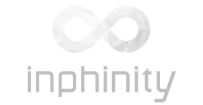Master Data in SAP
Klaudia Górczak
Reading time: 12 min
 Date: 26 May 2022
Date: 26 May 2022Data are everywhere and everyone uses it in their work every day.
From the article you find out:
- Why effective Master Data Management (MDM) is crucial to the operation of a business?
- What is Master Data and what are its examples?
- How is enterprise data integrated in SAP?
- What are the benefits of employing a Master Data Analyst?
- What challenges does a company face when it wants to manage its data effectively?
- What services are provided by BPX S.A. in the MD area?
Why is effective data management crucial to the operation of a business?
Data are everywhere and everyone uses it in their work every day. It is a reflection of facts, and when put in context, it creates information, and it is that builds the digital world. Best practices of data management are fundamental to the proper functioning of a business. The reason for this is so that important decisions are made in a timely manner and departmental responsibilities are aligned. Managing business processes in a consistent manner saves time and effort for the company. Established rules and regulations enforce a structured organization for data management, which includes activities of structured data identification, recording, classification, modeling, security, archiving and deletion. Simplified processes and effective data management ensure faster decision-making, which influences better response to customer needs. Master Data Management (MDM) addresses the quality of master and reference data. The ultimate goal is to create unique records, making the enterprise more competitive.
The increasing volume of data is challenging data management practices and the appropriate quality of data in companies. Additionally, today’s technology allows for more data to be stored than a company can manage. SAP MDM, also called reference data management, is an integrated IT and business function. Master Data combines business intelligence (BI) with transactional data. MDM synchronizes data from multiple business areas such as sales, procurement, manufacturing, and finance. MDM is a process that helps a company standardize the definitions and attributes of all its critical data elements (customer, vendor, product) to create a common baseline across the enterprise.
What is Master Data?
In an article in the bimonthly magazine „Computerworld”, editor Anna Ładan signals: “Forget oil, diamonds or cryptocurrencies. Introduce the eco-friendly, renewable, non‑inflationary and inexhaustible currency of the future: data.
Master Data is a compilation of enterprise information. For example, master data for the procurement process includes material master records, supplier master records, procurement information records and source lists. On the other hand, in the case of sales and distribution, the main objects are customers, materials and conditions. The existence of such a database in the system makes it possible to reduce the time of data entry in transactions because on the basis of various correlations, the relevant data will be given as default.
Material master data
The enterprise stores material information in the system in the form of material master records. This data is shared and tabbed according to its use by enterprise departments. The material master record data is grouped into main and additional. The former are the data that is included in the tabs, for example, this would be the basic or sales data. The additional data are supplementary information such as short texts, units of measurement and consumption. The data that is contained in the „Purchasing” tab is used when creating a purchase order. The information contained in the MRP tab fields is the basis for planning material requirements. On the other hand, the data from the accounting tabs are necessary in the material valuation process. Taking inventory and accounting for material movements is based on data relating to inventory management. The relevance of data depends on the organizational level. Enterprise-wide priority data, such as material index, basic unit of measure, and material group, are stored at the mandate level. Data relevant to the plant and all storage locations assigned to it are held at the plant level. Examples of this type of data are the fields that characterize purchasing. Information intended for the storage location is maintained only at its level.
Material master record transaction codes:
MM01 – create material master record;
MM02 – change material master record;
MM03 – display material master record.
Vendor Master Data
Information about suppliers cooperating with a given enterprise is stored in the system in the form of vendor master records. The data comprising the vendor master record is divided into categories as it is used by the Procurement Department and Accounting Department. The general data, which pertains to the entire mandate, includes the supplier’s address and bank details. Mirroring the accounting data of the master record, which is maintained at the business unit level, are, for example, the payment methods for automated payment transactions and the reconciliation account number. Data maintained by the Procurement Department include, among others: International Trade Rules (Incoterms) and the currency of the purchase order. The user can choose to have only the Accounting or Purchasing data available at any given time – or they can handle it centrally. The vendor master record number is the same as the supplier analytical account number in Accounting.
Vendor master record transaction codes:
XK/FK/MK01 – create vendor master record;
XK/FK/MK02 – change vendor master record;
XK/FK/MK03 – display vendor master record;
(XK## – central, FK## – FI, MK## – MM).
Purchasing Information Record
A purchasing information record is the assigned information for a combination of a particular vendor and a particular material. This assignment takes place at the procurement department and material level. The information record defines data such as scheduled delivery time, under- and over-delivery tolerance limits, and material price including discounts. The record is helpful when creating purchase orders because by entering the vendor and material number, the order will default to the data defined for that vendor and material in the information record.
Purchasing information record transaction codes:
ME11 – create purchasing information record;
ME12 – change purchasing information record;
ME13 – display purchasing information record.
Source list
The next important master data in the SAP system is the source list, which is created at the plant level. For a specific material, suppliers are assigned from which specific purchasing departments can purchase the considered material in defined periods of time. The specified sources are automatically assigned when creating a purchase requisition when the appropriate indicator is selected.
Source list transaction codes:
ME01 – maintain source list;
ME03 – display source list;
ME04 – changes to source list.
Customer master data
Information about customers to whom the products and/or services of a company are sold is stored in the system in the form of customer master records. These records are created centrally in the SAP system using transaction XD01. Customer master data consists of three views: General data, Sales Area data, and Company Code data. General data is key for Accounting and Sales and Distribution. It is valid for all business units in the mandate’s scope and is stored independently. Examples of customer master record general data are address, bank details, tax information. Sales Area data is relevant to Sales and Distribution and is valid for the defined compilations – Sales Organization, Distribution Channel and Division. The data handled by the Sales Department includes, for example: currency, sales region, shipping terms, shipping zone, payment terms, partner functions such as Payer, Bill-to party, Ship-to party. On the other hand, Company Code data, which is relevant to Accounting, includes: reconciliation account number, or blocking, and forms of payment.
Customer master record transaction codes:
XD/FD/VD01 – create customer master record;
XD/FD/VD02 – change to customer master record;
XD/FD/VD03 – display customer master record;
(XD## – central, FD## – FI, VD## – SD).
Condition Records
Customer-specific information, such as price, surcharge, tax, freight and discount, are stored in the system as conditio master records. It is possible to create conditions that depend on other factors. A good example is the establishment of discounts for specific material price groups. A flexible solution is to apply price agreements in designated time periods by setting their validity periods. The values in the terms record can be developed according to the scale you use.
Condition master record transaction codes:
VK11 – create condition records;
VK12 – change condition records;
VK13 – display condition records.
How is enterprise data integrated in SAP?
The term data integration in the IT area is used to describe the linking of databases. Integrating different sets of data can be a challenge when there are differences in formatting – data can be exported, for example, in csv, xml or PDF documents. Data integration in SAP is based on EDI (Electronic Data Interchange), which is an electronic exchange of data between a sender and a recipient. Both communication partners must speak the same language to understand each other. The language of EDI is the file formats and description languages used in EDI data files. IDoc’s (Intermediate Document) are used to transfer data between two different systems or within the same system and between different mandants. These documents are a small number of records in ASCII file format that form a logical whole. Each IDoc consists of two parts: a control record and data records. The control record is always the first line of the file and contains administrative information such as the origin, destination, content description, and context of the IDoc data. This record can be compared to the envelope of any paper document sent through the post. In turn, the data records that make up the rest of the file contain application-dependent data. Each record is labeled with a segment type, followed by the segment data. The segment information tells the IDoc processor how the segment data is structured and how it should be interpreted. The message type defines the semantic context of the IDoc. The same data can be sent under different message types, such as data from a purchase order and a sales order. The message type tells the recipient how the message should be interpreted. Examples: MATMAS – material master data, CREMAS – supplier master data, DEBMAS – customer master data, ORDERS – purchase order data. The IDoc type defines the structure of the IDoc, that is, which segments are in the IDoc and what fields these segments consist of. Different segments consist of different fields. An IDoc can be triggered at a specific time – a background job – or at the time of an event. For example, there are messages that tell the system that there is an IDoc waiting to be sent.
Benefits of hiring a Master Data Analyst:
- Correctness and usability of data, entered into the IT system, resulting from its validation.
- Smooth flow of business processes and their effective management thanks to good quality data.
- Increased productivity of the company through access to reliable data at the right time.
- Supervising data transfer between specific systems.
- Monitoring the necessity of updating data in the system.
- When data changes are required, mass updating of data.
- Supporting data migration activities and system upgrades to newer versions.
What are the challenges faced by a company that wants to manage its data effectively?
In the era of digitization, companies use a variety of data sources such as smart devices, social media, and web applications. The sine qua non for effective information management by a company is its awareness of the type and amount of data it has at its disposal. The most important task for a company that wants to have a database of good quality information and manage it based on information systems is to define data correctly. Moreover, the company should strive to guarantee the completeness of the data by checking whether they include all the information necessary to carry out the process. Besides, it is important for the business entity to oversee the consistency of data so that it does not contradict or contain duplicates. In this era of ever-changing regulations, another challenge for a business is monitoring data compliance. Business entities must be able to quickly identify whether data is identical to top-down formats. A particular application exists in the food and pharmaceutical industry, whose production processes must comply with Good Manufacturing Practice (GMP) standards. This is closely related to the specific rules of creating documentation in terms of data integrity. A company should be aware that exclusive data consolidation without data processing will not provide any added value for the company. The priority is to find adequate tools for data analysis taking into account human rescources and time constraints. Companies should be able to adapt data storage methods rapidly according to analysis requirements, for example, easy changes in data format. In summary, data managed according to FAIR principles (an acronym based on the words “findable”, “accessible”, “interoperable”, and “reusable”) becomes a reason for a company to be competitive and a driver of innovation. So if a company invests in development, the decision to implement “Master Data” solutions should come down not to the question “is it worth it”, but: “when do we start?”.
Services provided by BPX S.A. in the MD area:
- SAP MDM – master data management in SAP;
- data migrations;
- data integrations;
- data validations;
- data quality verification;
- mass data updates.
Contact us and find out more about dedicated SAP solutions: bpx@bpx.pl
Source:
- Ronald Jonker, Jeroen Tegelaar and Jan Geurtsen. (2012) Enterprise Data Management: use and need. Compact. 2: 1-8
- Risto Silvola, Olli Jaaskelainen, Hanna Kropsu-Vehkapera, Harri Haapasalo. (2011) “Managing one master data – challenges and preconditions”. Industrial Management & Data Systems. 111(1): 146-162.
- Constantin-Gelu A. (2007) “Enterprise Master Data Management Trends and Solutions”. Revista Informatica Economică. 3(43): 35-38.
- Cervo, Dalton, Allen, Mark. Master Data Management in Practice: Achieving True Customer MDM. ISBNs: 9780470910559. 9781118085660. [Wiley Corporate F&A].Hoboken, N.J.: Wiley. 2011.
- Hendler J. (2014) “Data integration for heterogenous datasets”. Big Data. 2(4): 205-215.
- Axel Angeli. SAP R/3 IDoc Cookbook for EDI and Interfaces Logos! Informatik GmbH 1999. Strony 15-30.
- https://www.computerworld.pl/news/Dane-innowacja-przepis-na-staly-sukces-w-zmiennym-swiecie,433510.html
- https://www.all-for-one.pl/pl/poradnik/mdm-prawda-jest-tylko-jedna/
- https://www.oracle.com/pl/database/what-is-data-management/
- https://www.ibm.com/topics/edi-electronic-data-interchange
- https://www.ibm.com/topics/edi-electronic-data-interchange
See recent writings
You drive us to strive for excellence in delivered projects and common challenges. Feel invited to read out blog that provides more in-depth knowledge on our implementations and experience. Read articles about digital business transformation, ERP and Business Intelligence systems. Discover interesting practical applications for future technologies.
- Blog
Navigating the challenges of introducing new software in a company – the role of technology and social dynamics
Contact us!
Let’s talk! Are you interested in our solutions? Our experts are happy to answer all of your questions.
 pl
pl















